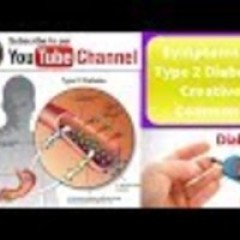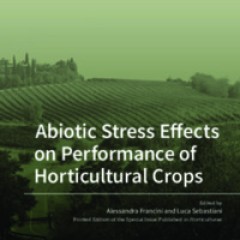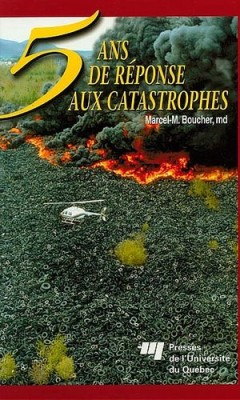Filter by

Cataract Explained from A to Z
This video was created for the contest " anatomy by students, international contest" Category 5. ENT, ophthalmology, General Practice This video by Hershko Sarah is licensed under the Creative Commons Attribution ShareAlike 4.0 International license, or later version, see: https://creativecommons.org/licenses/by-sa/4.0/
- Edition
- -
- ISBN/ISSN
- -
- Collation
- -
- Series Title
- -
- Call Number
- 610

Symptoms of Type 2 Diabetes
This is always a surprising situation for most people around, who just go for regular check up to the doctor and end up knowing that they are suffering from one of the most common disease “diabetes “or “pre diabetes” condition. Even your doctor keep on warning you for the diabetes before or give you the idea that all such symptoms may lead to such terrible non ending disease. This…
- Edition
- -
- ISBN/ISSN
- -
- Collation
- -
- Series Title
- -
- Call Number
- 610

Women’s Health
This openly licensed textbook explores the multidimensional aspects of health and wellness as they overlap the female experience. Reproductive anatomy and physiology (including pregnancy and childbirth), cancer risk, nutrition, fitness, gender and sexuality, self-care, and health ageing are introduced.
- Edition
- -
- ISBN/ISSN
- -
- Collation
- -
- Series Title
- -
- Call Number
- 613.042 44 MAR w

Wellness
Provides a study of fitness and wellness and their relationship to a healthy lifestyle. Defines fitness and wellness, evaluates the student's level of fitness and wellness, and motivates the student to incorporate physical fitness and wellness into daily living.
- Edition
- -
- ISBN/ISSN
- -
- Collation
- -
- Series Title
- -
- Call Number
- 613 ARA w

Abiotic Stress Effects on Performance of Horticultural Crops
Horticultural crop yield and quality depend on genotype, environmental conditions, and production management. In particular, adverse environmental conditions may greatly affect crop performance, reducing crop yield by 50%–70%. Abiotic stresses such as cold, heat, drought, flooding, salinity, nutrient deficiency, and ultraviolet radiation affect multiple physiological and biochemical mechanism…
- Edition
- -
- ISBN/ISSN
- -
- Collation
- -
- Series Title
- -
- Call Number
- 630
Accelerators in Silicon Valley : Building Successful Startups
This book describes how accelerators, the 'schools of startup entrepreneurship', help startups to become successful companies in Silicon Valley, the world's most successful innovation region.
- Edition
- -
- ISBN/ISSN
- 9789048538683
- Collation
- -
- Series Title
- -
- Call Number
- 650

7 Urban ecosystem services and stakeholders
This chapter argues that the discussion of urban sustainability is in urgent need of new understanding of how ecosystem services are generated in places where human and non-human stakeholders interact within the urban landscape. More than half of the world’s population currently lives in urban areas, and the rate of urbanisation is estimated to increase rapidly in the next three decades ( Uni…
- Edition
- -
- ISBN/ISSN
- -
- Collation
- -
- Series Title
- -
- Call Number
- 650

5 ans de réponse aux catastrophes
En présentant diverses expériences vécues en situation de crises ou de catastrophes, ce volume s'adresse à toute personne qui de près ou de loin joue un rôle dans la réponse aux grandes urgences : les responsables des services d'incendie, de police, de communication, de sécurité civile, les médecins, infirmières, psychologues, ambulanciers, militaires, les dirigeants d'entreprise à …
- Edition
- -
- ISBN/ISSN
- 9782760521216
- Collation
- -
- Series Title
- -
- Call Number
- 650

4.1 Il realismo strategico nel governo d'impresa Materiali per una pragmatic…
Like all the books in this series, this volume proposes wide-ranging reflections and cultural considerations pertinent to business management. Traditionally, realism is identified with a disenchanted approach to reality which is counterpoised to all forms of ideology or utopia. What is proposed here is a strategic realism which supports a humanist approach to enterprise, while steering clear of…
- Edition
- -
- ISBN/ISSN
- 9788855189675
- Collation
- -
- Series Title
- -
- Call Number
- 650

3.1 Etica di impresa Considerazioni teoriche ed evidenze tecniche
This book proposes theoretical reflections, tools and techniques for a business ethic that aims at the construction of social welfare. A correct connotation of business ethics is seen in its role of interface between the ontology of the "enterprise phenomenon" and the social ethics of its operation. The book upholds the theory that business development can be such only if it leads to the emanci…
- Edition
- -
- ISBN/ISSN
- 9788892739611
- Collation
- -
- Series Title
- -
- Call Number
- 650
 Computer Science, Information & General Works
Computer Science, Information & General Works  Philosophy & Psychology
Philosophy & Psychology  Religion
Religion  Social Sciences
Social Sciences  Language
Language  Pure Science
Pure Science  Applied Sciences
Applied Sciences  Art & Recreation
Art & Recreation  Literature
Literature  History & Geography
History & Geography